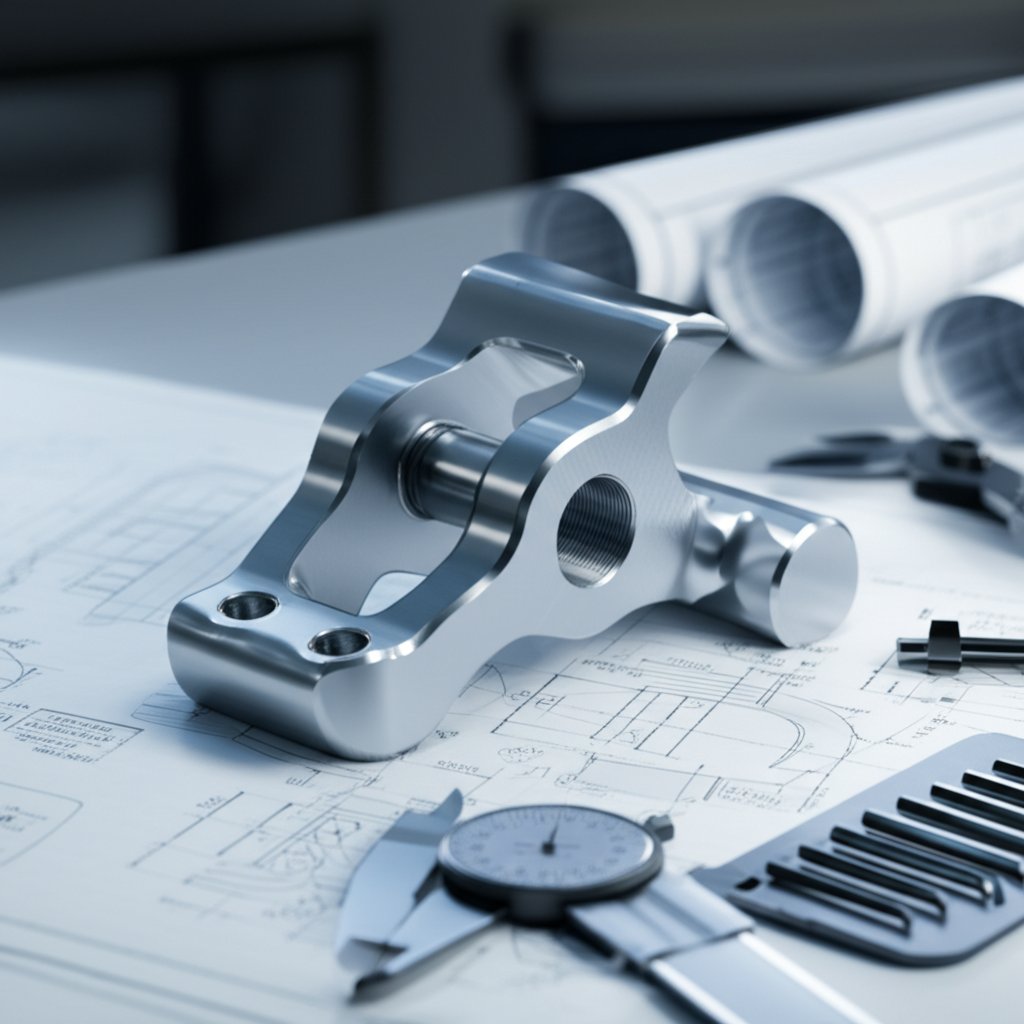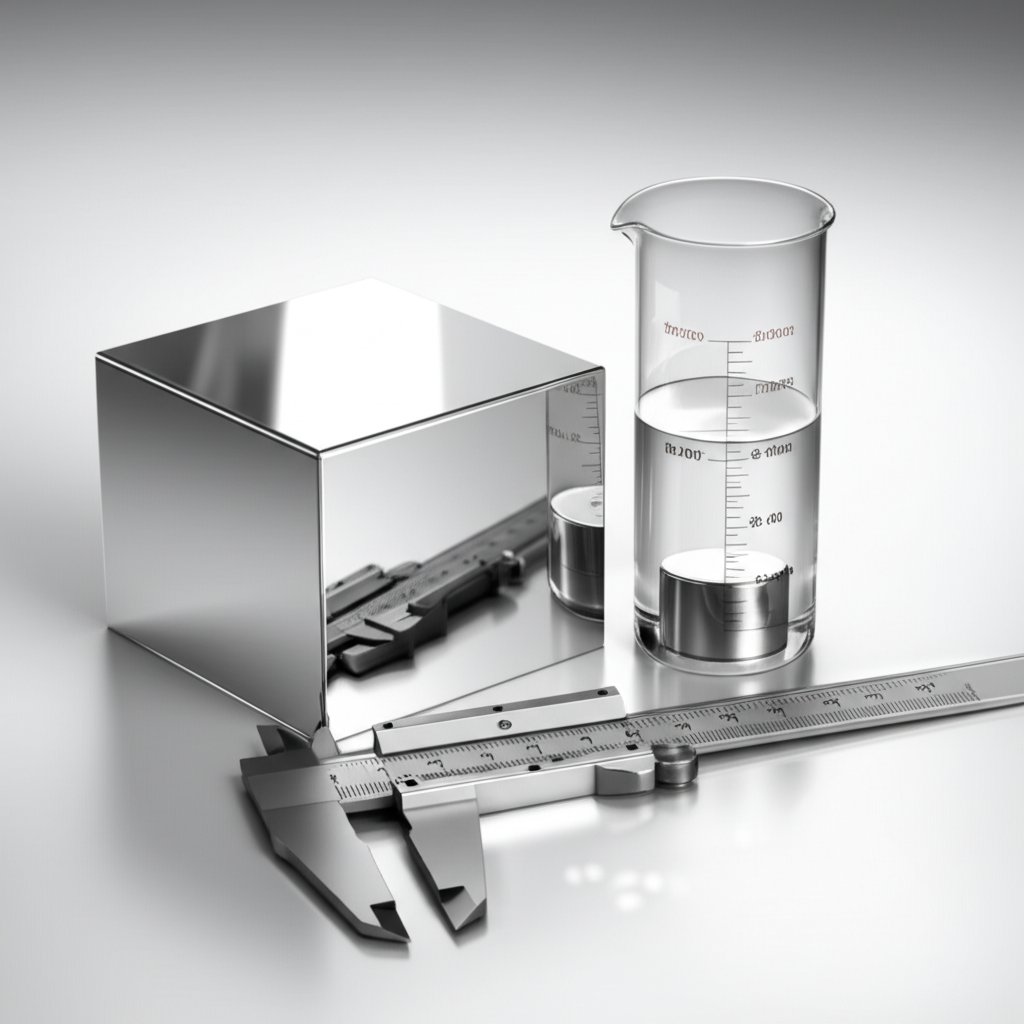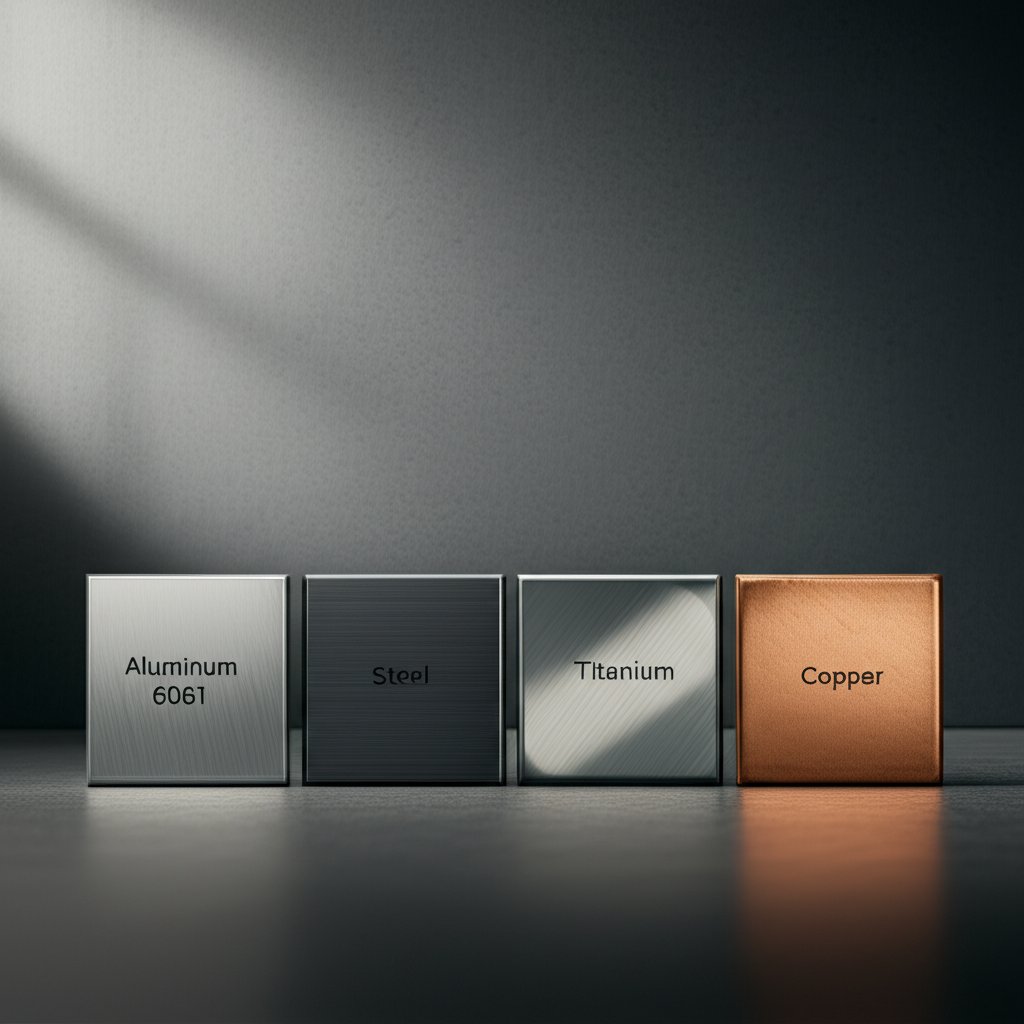
Ever wondered why certain materials feel lighter in your hand, yet still offer impressive strength? The answer often comes down to a key physical property: density. When you pick up a bike frame, a car part, or even a piece of sporting equipment made from aluminum alloy 6061, you’re experiencing the unique balance of lightness and durability that this material provides. But what exactly is density, and why does it matter so much—especially for aluminum alloy 6061?
Density is essentially how much mass is packed into a given volume of material. It tells you, for example, how heavy a block of metal will be for its size. In engineering and manufacturing, understanding the aluminum alloy 6061 density is crucial. Why? Because it directly affects how much a finished product weighs, how strong it needs to be, and how it performs under stress. Imagine designing an airplane, a car chassis, or a bridge. Every ounce matters—not just for cost, but also for safety, efficiency, and performance.
Aluminum alloy 6061 is one of the most popular choices in industries ranging from aerospace to construction. This is largely due to its excellent combination of mechanical properties—such as good strength, corrosion resistance, and weldability—paired with its relatively low density. In fact, aluminum’s density is about one-third that of steel, making it a go-to material when weight savings are essential (Kloeckner Metals).
This article will guide you through everything you need to know about aluminum alloy 6061 density. We’ll explore what density means for this alloy, how it’s measured, the factors that influence it, and why it’s so important in real-world applications. By the end, you’ll have a clear understanding of how this single property impacts design choices, performance, and the broad versatility of aluminum alloy 6061 properties.

When you’re choosing a material for an engineering project, have you ever wondered: how much does it really weigh for its size? That’s where density comes in—a simple yet powerful concept that plays a major role in the performance and design of aluminum alloy 6061 components.
Density is defined as the amount of mass in a given volume. In mathematical terms, it’s expressed as:
Density (ρ) = Mass (m) / Volume (V)
Imagine you’re holding a one-inch cube of aluminum. Its weight is determined by how much material is packed into that space. This is why density is such a vital property in material science and engineering—it tells you exactly how heavy a certain volume of material will be. For aluminum alloy 6061, this means you can predict the weight of a finished part before it’s even made, just by knowing its dimensions and the alloy’s density.
Because the composition and processing of 6061 aluminum alloy are tightly controlled, its density is remarkably consistent across different batches and forms. This reliability is a huge advantage for engineers, as it means calculations for weight, strength, and performance can be made with confidence.
Let’s say you’re designing a lightweight drone frame or a high-performance bike. Knowing the density of aluminum alloy 6061 allows you to:
But density doesn’t just affect weight. It also influences other 6061 aluminum alloy properties, such as thermal conductivity, electrical conductivity, and even corrosion resistance. For example, a lower-density material like 6061 can provide significant fuel savings in vehicles, while still offering the necessary strength and durability.
In summary, understanding and accurately measuring the density of aluminum alloy 6061 is foundational for engineers and designers. It enables precise calculations, informed material selection, and innovative designs that push the boundaries of what’s possible. As we move forward, we’ll explore the actual numerical values for 6061’s density and why this figure is a trusted reference in the world of engineering.
Ever wondered just how much a piece of 6061 aluminum really weighs? When you’re designing a part or calculating shipping weights, knowing the precise density is essential. Fortunately, 6061 aluminum alloy density is not only well-established but also remarkably consistent across the board—making it a trusted standard in engineering and manufacturing.
The nominal density of aluminum alloy 6061 is widely recognized as 2.70 grams per cubic centimeter (g/cm³). This value translates directly to other common units, making it easy to work with whether you’re using metric or imperial measurements. Here’s a handy table to keep these numbers at your fingertips:
| Unit | Density Value |
|---|---|
| Grams per cubic centimeter (g/cm³) | 2.70 |
| Kilograms per cubic meter (kg/m³) | 2,700 |
| Pounds per cubic inch (lb/in³) | 0.0975 |
These values are echoed across authoritative sources, including ASM and industry datasheets (ASM MatWeb), as well as technical overviews from leading aluminum suppliers (Gabrian International). In every case, the numbers align, providing confidence and consistency for engineers worldwide.
Unlike some materials where density can fluctuate due to impurities or processing differences, the aluminum alloy 6061 density kg m3 value remains stable—primarily because the alloy’s chemical composition is strictly standardized. Whether you’re sourcing 6061-T6, 6061-T651, or another temper, you’ll notice that the density does not meaningfully change. This consistency means you can:
For example, if you’re designing a structural beam or a precision-machined component, you can use the standard density value in your calculations without worrying about unexpected weight variations. This reliability is one reason why 6061 aluminum is a go-to material for aerospace, automotive, and architectural applications.
As we move forward, it’s important to understand what gives 6061 its consistent density. Next, we’ll explore how the alloy’s composition plays a critical role in maintaining this trusted property.

When you hear about the impressive consistency of aluminum alloy 6061 density, you might wonder: what’s going on at the atomic level that keeps this property so stable? The answer lies in the alloy’s carefully controlled composition. Let’s break down how the chemical composition of 6061 aluminum alloy shapes its density—and why this matters for real-world applications.
At its core, 6061 is an aluminum alloy, meaning it’s made mostly of aluminum with a small mix of other elements added to enhance certain properties. The primary alloying elements in aluminum alloy 6061 composition are magnesium and silicon, with trace amounts of copper, chromium, and other elements. Here’s a quick look at the typical breakdown:
These values are tightly regulated to ensure the alloy’s properties remain consistent across different batches and manufacturers (Xometry).
Sounds complex? Let’s simplify. Aluminum itself is a lightweight metal, and the small amounts of magnesium and silicon added to 6061 don’t significantly change its overall density. In fact, the densities of these elements are relatively close to that of aluminum, so their impact is minimal. Here’s how the main components stack up:
Because magnesium and silicon—both lighter than aluminum—make up the majority of the alloying additions, they don’t increase the density. The heavier elements like copper and chromium are present in such small quantities that their effect is negligible.
Imagine you’re baking a cake and always using the same recipe. As long as you stick to the exact measurements, the cake turns out the same every time. The same principle applies to 6061 aluminum: the recipe (or chemical composition) is standardized, so the density remains consistent. According to industry standards, even minor variations in aluminum alloy 6061 composition are kept within strict limits, ensuring that the density value engineers use in calculations doesn’t unexpectedly change (Xometry).
This reliability is a big deal for designers. When you specify 6061 for a project, you can trust that your weight calculations will be accurate, your structural analyses will be sound, and your manufacturing processes will yield predictable results.
Because the chemical composition of 6061 aluminum alloy is so tightly controlled, its density remains a stable, dependable value. This consistency simplifies everything from engineering design to quality control, making 6061 a favorite in industries where reliability is non-negotiable.
Next, let’s see how heat treatments and tempers—like T6—impact the density story, and whether they introduce any surprises for engineers working with 6061 aluminum.
When you see designations like T6 or T651 attached to aluminum alloy 6061, you might wonder: does this change the density, or is it all about strength? Let’s break down the facts so you can confidently choose the right material for your next project.
First, let’s clarify what a “temper” means. In the context of aluminum alloys, a temper is a code that describes the specific heat treatment or mechanical processing the alloy has undergone. For example, aluminum alloy 6061 T6 is a version of 6061 that’s been solution heat treated and artificially aged to achieve high strength and hardness. Other common tempers include T4 (solution heat treated, naturally aged), T5 (cooled from an elevated temperature and artificially aged), and T651 (T6 with minor stretching to relieve stress) (JM Aluminium).
Sounds like a lot of processing, right? But here’s what surprises many: the density of 6061 aluminum alloy remains virtually unchanged across all these tempers. Why? Because density is determined by the alloy’s chemical composition and atomic structure—not by the heat treatment or mechanical processing it receives.
When 6061 is heat treated to achieve the T6 temper, the atoms are rearranged at a microscopic level to improve strength and hardness. However, the total mass and overall volume of the material do not change in any meaningful way. This means that the 6061 T6 aluminum alloy density is the same as the base 6061 alloy—about 2.70 g/cm³ (0.098 lb/in³) (Tomorrow Al).
It’s easy to assume that making a material stronger must make it heavier or denser. But with aluminum alloys, this isn’t the case. The T6 temper dramatically increases tensile strength and hardness, making 6061-T6 a favorite for structural parts, aerospace, and automotive components. Yet, you’ll notice no practical change in density. This is why engineers rely on published density values for all 6061 tempers, including T4, T5, T6, and T651, when performing weight calculations or structural analysis.
So, when you select 6061-T6 aluminum for its mechanical performance, you can trust that its density is just as consistent as the standard 6061 alloy. This reliability makes life easier for engineers and designers who need to predict weight, balance, and performance in critical applications.
Now that you know heat treatments shape strength, not density, let’s see how 6061’s density compares to other common engineering materials—and what that means for real-world design choices.

When you’re faced with a material selection decision—whether it’s for an aircraft wing, a car frame, or a structural beam—density often sits at the top of your checklist. But how does aluminum alloy 6061 density truly stack up against other engineering materials? Let’s break it down with real-world numbers, practical examples, and a handy 6061 aluminum alloy density chart to make comparisons easy.
Imagine you’re comparing different metals for a lightweight yet strong structure. Here’s a side-by-side look at the densities of 6061 aluminum and several widely used materials, based on authoritative engineering tables.
| Material | Density (g/cm³) | Density (kg/m³) | Density (lb/in³) | Key Characteristics |
|---|---|---|---|---|
| 6061 Aluminum Alloy | 2.70 | 2,700 | 0.0975 | Lightweight, strong, versatile, good corrosion resistance |
| 6063 Aluminum Alloy | 2.70 | 2,700 | 0.0975 | Excellent surface finish, superior corrosion resistance, easier to extrude |
| 1060 Aluminum (Pure) | 2.70 | 2,700 | 0.0975 | High electrical conductivity, very ductile, low strength |
| Steel (Mild/Carbon) | 7.85 | 7,850 | 0.284 | Very strong, much heavier, widely used in construction |
| Titanium | 4.51 | 4,510 | 0.163 | High strength-to-weight, corrosion resistant, premium aerospace/medical |
| Copper | 8.96 | 8,960 | 0.323 | Excellent electrical/thermal conductivity, heavy |
| Stainless Steel | 7.75–8.00 | 7,750–8,000 | 0.278–0.289 | Corrosion resistant, very strong, heavy |
Despite their similarities, the choice between aluminum alloy 6061 vs 6063 often comes down to the specific mechanical and aesthetic requirements of your application.
The right density enables:
That’s why engineers and designers rely on precise, consistent density data when making critical material choices.
When your project demands exacting standards, you need a supplier who understands the importance of material properties. Shengxin Aluminum stands out as a trusted partner, offering high-quality 6061 aluminum profiles manufactured to tight tolerances and tailored to your density and performance requirements. With advanced production capabilities and a reputation for reliability, Shengxin ensures you get the right material—every time.
Understanding how 6061 aluminum’s density compares across materials empowers you to make smarter, lighter, and stronger designs. Next, let’s explore why this property is a key parameter in engineering design and material selection.
When you’re designing anything from a lightweight drone to a massive bridge, have you ever stopped to ask: how does the material’s density impact the final product? Sounds simple, but the density of aluminum alloy 6061 is one of those hidden parameters that can make or break a design—especially when performance, efficiency, and cost are on the line.
Let’s break it down. Density is more than just a number—it’s the foundation for a cascade of design choices. Here’s how:
Imagine the challenge: engineers must design an aircraft that’s strong enough to withstand flight stresses but light enough to maximize fuel efficiency. This is where aluminum alloy 6061 specifications become invaluable. With a density of around 2.70 g/cm³, 6061 aluminum is about one-third the weight of steel, yet offers robust mechanical strength and corrosion resistance (Sofia University). This enables:
But it’s not just about planes and cars. The practical benefits of 6061’s density extend to construction, marine, electronics, and sporting goods. Here’s why:
All these advantages are rooted in the unique combination of aluminum alloy 6061 properties: low density, good strength, excellent workability, and superior corrosion resistance (Gabrian International).
In a world where energy efficiency, sustainability, and cost-effectiveness are increasingly important, the density of 6061 aluminum gives engineers a powerful tool for innovation. Whether you’re modeling the next electric vehicle or building modular architecture, understanding and leveraging the density of 6061 allows for smarter, lighter, and more efficient designs.
As you continue exploring how 6061’s density empowers cutting-edge applications, you’ll see its impact ripple across industries—fueling progress and enabling breakthroughs that would be impossible with heavier, less versatile materials. Next, let’s look at how this property delivers value in specific industries and real-world projects.

When you’re choosing materials for a project, have you ever thought about how a single property—like density—can ripple through entire industries? With 6061 aluminum alloy, this isn’t just theory. Its consistent, low density is a driving force behind innovation in fields as varied as aerospace, automotive, marine, construction, sporting goods, and electronics. Let’s explore how this property shapes real-world applications and why it’s prized by engineers worldwide.
Imagine designing a product where every gram counts. In sectors like transportation or electronics, weight savings can translate directly to better performance, lower costs, and even environmental benefits. The reliability of aluminum alloy 6061 density—always around 2.70 g/cm³—means you can make precise calculations and trust that your design will meet strict requirements every time. This predictability is essential for industries that demand safety, efficiency, and repeatable quality.
When performance and reliability are non-negotiable, you need a manufacturing partner who understands the critical role of material properties. Shengxin Aluminum is a leader in producing high-tech 6061 aluminum profiles for demanding sectors. With over 100 advanced production lines—including extrusion, anodizing, powder coating, and deep processing—Shengxin can deliver precisely engineered profiles for rail transit, automotive, marine, and industrial applications.
In every industry, the consistent density of 6061 aluminum alloy unlocks new possibilities for lighter, stronger, and more efficient designs. With expertise and state-of-the-art facilities, Shengxin Aluminum stands ready to help you turn density into a competitive advantage—no matter how ambitious your application. In the next section, we’ll see how engineers can harness this property to maximize performance and efficiency in their designs.
When you’re aiming to squeeze every bit of performance and efficiency out of your design, how do you make sure you’re using the right material in the right way? For engineers, the answer often starts with a deep understanding of 6061 aluminum alloy density—and how to leverage it for smarter, lighter, and more reliable products.
Imagine you’re designing a drone, a car chassis, or a piece of industrial equipment. The first question is often: how much will it weigh? Here, density is your foundation. By knowing that 6061 aluminum’s density is approximately 2.70 g/cm³ (2,700 kg/m³), you can:
Lightweighting is more than a buzzword—it’s a driving force in modern engineering. By selecting 6061 aluminum and using its known density, you can:
For example, in electric vehicles, using 6061 aluminum for battery enclosures and chassis parts helps extend driving range by minimizing weight, while still meeting strict crash and durability standards.
Adhering to aluminum alloy 6061 specifications is non-negotiable in industries where safety, reliability, and compliance are paramount. Standards from organizations like ASTM International and the Aluminum Association define not only chemical composition and mechanical properties but also acceptable density ranges. This ensures:
It’s not just about the numbers on a datasheet. The real value comes from how 6061 aluminum alloy density works in harmony with other properties—like corrosion resistance, weldability, and mechanical strength. This unique combination makes 6061 a go-to material for projects where performance, weight, and reliability must all be optimized together (Shengxin Aluminium).
In summary, when you understand and apply the optimal density of 6061 aluminum in your engineering workflow, you unlock new possibilities for innovative, efficient, and competitive designs. Up next, we’ll look at how these strategies play out in real-world industries and applications, showing the tangible benefits of making density a central design parameter.
When you step back and look at the big picture, it’s clear that aluminum alloy 6061 density is more than just a number on a datasheet—it’s a cornerstone for smart, efficient, and innovative engineering across countless industries. Let’s quickly recap the key points that make 6061’s density so valuable and reliable for your next project.
Aluminum alloy 6061 has a standard density of approximately 2.70 g/cm³ (2,700 kg/m³ or 0.0975 lb/in³), making it a lightweight yet strong choice for engineering applications.
6061 aluminum shares similar properties with alloys like 6082-T6 and 6005A-T6. These equivalents are chosen for their comparable strength, corrosion resistance, and weldability, making them suitable alternatives in various structural and industrial uses.
6061 aluminum is about one-third the density of steel and lighter than titanium. This low density allows for significant weight savings in structures without compromising essential strength or durability.
No, temper designations such as T6 or T651 alter the mechanical strength and hardness of 6061 aluminum but do not significantly change its density. The density remains stable regardless of temper, ensuring reliable weight calculations.
Density affects the overall weight, strength-to-weight ratio, and efficiency of designs. Knowing the density of 6061 aluminum helps engineers optimize structures for performance, cost, and compliance with industry standards.
 Інтернет-сервіс
Інтернет-сервіс 0086 136 3563 2360
0086 136 3563 2360 sales@sxalu.com
sales@sxalu.com +86 136 3563 2360
+86 136 3563 2360